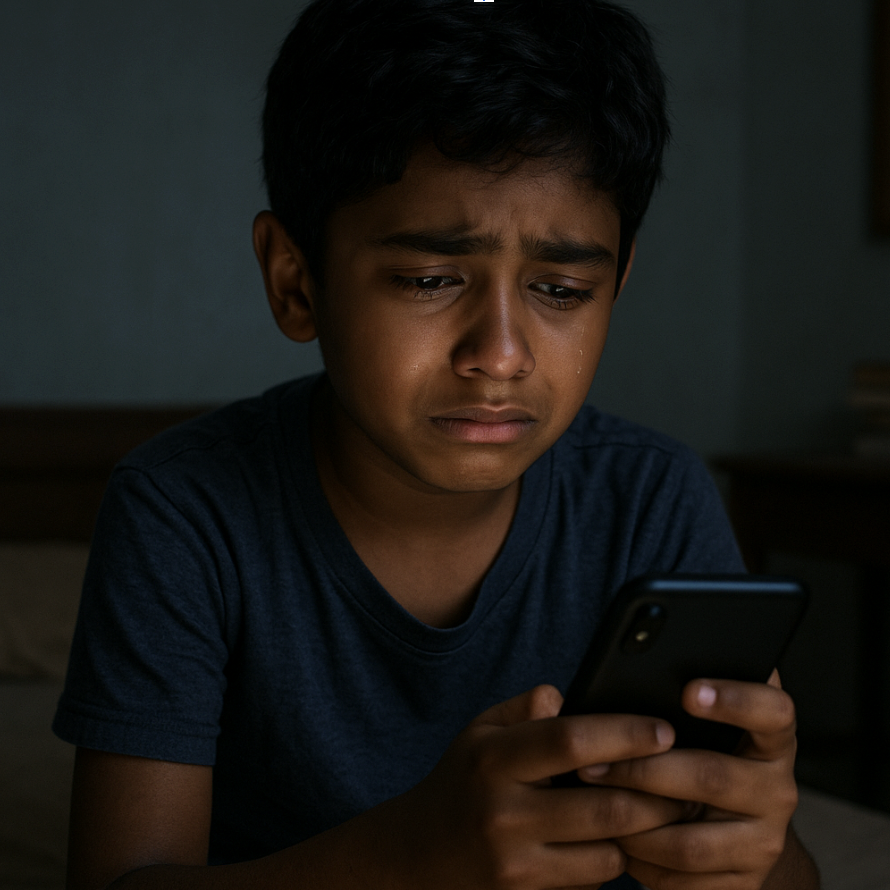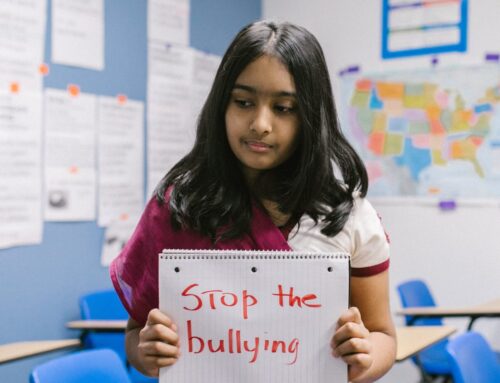“Sticks and stones may break my bones,
but sharper still are words on phones.”
We grew up on the internet. It taught us the lyrics to songs we never meant to memorize. It raised us on Pokémon, Orkut scraps, MSN nudges, and “brb” that actually meant something.
But for today’s kids, the internet isn’t just a playground. It’s also a battlefield.
And right now, India is at the very top of the leaderboard for something we never wanted to win: cyberbullying.
According to McAfee Corp., India ranks #1 globally for reported cyberbullying, with kids facing it as early as age 10. Eighty-five percent of Indian kids say they’ve been cyberbullied. Eighty-five. That’s not a statistic anymore – that’s a problem in plain sight.
The monster behind the screen
Unlike the schoolyard bully, today’s tormentor doesn’t lurk near the lockers. They live in your child’s pocket. They slide into DMs, post “jokes” that cut deeper than they look, tag friends in cruel memes, and never need to look their victim in the eye.
A 2019 UNICEF poll across 30 countries revealed that 1 in 5 young people have skipped school because of online bullying and violence. That’s how real the impact is. This isn’t “kids being kids.” This is fear, anxiety, and trauma delivered through Wi-Fi.
And it’s not just happening behind the screen anymore – it bleeds into classrooms, cafeterias, and childhoods.
The offline spillover
We love to pretend the internet is a separate dimension – a magical portal where we can log in, then log out of consequences. But emotions don’t flip like a switch.
A comment posted at 2 a.m. on a child’s reel doesn’t stay online. It walks with them into class the next morning. It sits with them during lunch. It whispers when they look in the mirror.
A 2023 study by the National Commission for Protection of Child Rights found that 42% of Indian school students have experienced bullying. Another long-term study by researcher Aditi Gyanesh (2017) found that 42% of students in grades 4–8 and 36% in grades 9–12 have faced peer harassment.
The culture of casualizing cruelty
We’re a country where “toughening up” is often the default parental advice.
“Don’t take it so seriously.”
“Block them and move on.”
“Kids are mean. It’ll pass.”
This culture of minimizing pain is what keeps bullying unchecked and victims unheard. And when cruelty happens online, where reach is infinite and screenshots are forever, the wound doesn’t fade with the school bell.
Pop culture hasn’t helped much either. Trolls are given platforms, they’re treated like side characters in a comedy, and kids are absorbing these cues in real time.
And then shows like Adolescence come along, painfully honest, brutally raw, showing how a single meme, a viral clip, or a whisper campaign online can unravel a teen’s entire world. It’s fiction, sure. But the kind that’s written in familiar handwriting.
Where the system is cracking
Schools are often still treating cyberbullying like it’s an after-school problem and therefore not a school problem, something to be handled at home, preferably by Wi-Fi password resets. But the truth? It starts earlier than ever.
Ten-year-olds. Fifth graders. Children should be deciding which Pokémon is their favorite, not whether their body is “ugly” because a classmate said so online.
A monster is easiest to slay when it’s small. But we’re letting this one grow up with our children.
The numbers don’t lie
Let’s stack it up:
- 85% of Indian kids have experienced cyberbullying (McAfee).
- 42% of school students have experienced bullying (NCPCR).
- 42% of students in grades 4–8 have faced peer harassment (Aditi Gyanesh’s national study).
- 1 in 5 young people have skipped school because of bullying (UNICEF global study).
This isn’t “kids these days.” This is a systemic failure.
What needs to change
- Social media and digital literacy in schools: Not just classes on how to code. Classes on empathy, consent, and online accountability.
- Parent involvement: Creating spaces where kids can talk without fear of losing their phone or getting scolded for “being online too much.”
- Real anti-bullying policies: Actual reporting systems, follow-ups, and consequences. Not a few posters and a once-a-year seminar.
- Therapy as hygiene, not crisis response: Because emotional bruises need tending too.
Pop culture gets it right sometimes
“With great power comes great responsibility.”
— Spider-Man (or at least, Uncle Ben)
The internet gives us the power to create, canvas, campaign, connect, and express. But power without checks and balances can be like a loaded gun in a playground. We need to teach children not just how to use the internet, but how not to weaponize it against one another.
Closing thought
We teach kids how to cross roads, wear helmets, and look both ways before stepping out. But in a world where their first steps are increasingly digital, we also need to teach them how to guard their hearts and minds online.
Because this isn’t just about “kids today.” It’s about the kind of world we’re letting them inherit.
And the kind of digital citizens we choose to raise.
References
- McAfee Global Cyberbullying Report
- NCPCR Study
- Times of India: Bullying Survey
- UNICEF Poll
- Power of Zero: Bullying in India
The author Neha D’souza is a storyteller who treats writing as both craft and catharsis.







Leave A Comment